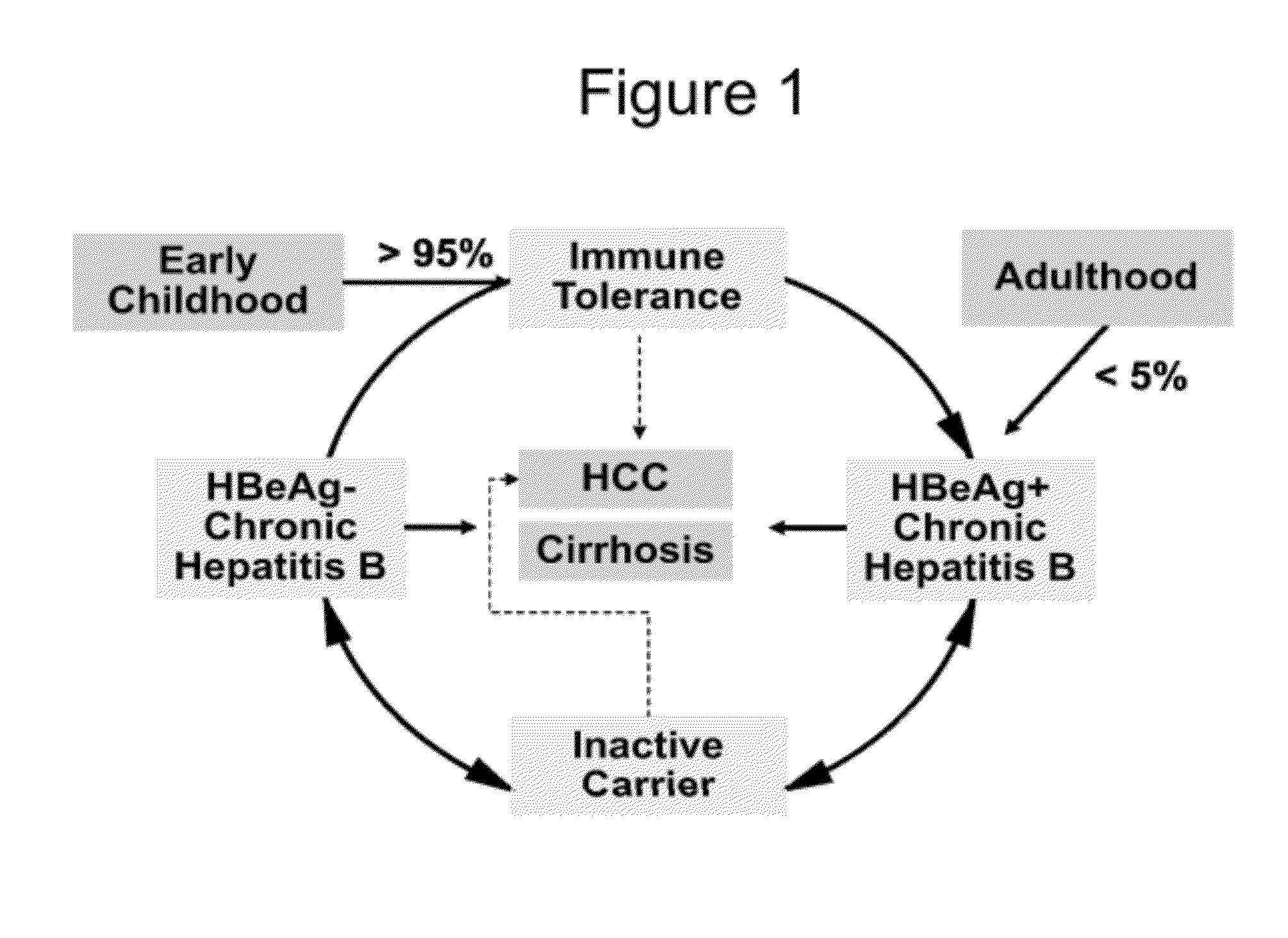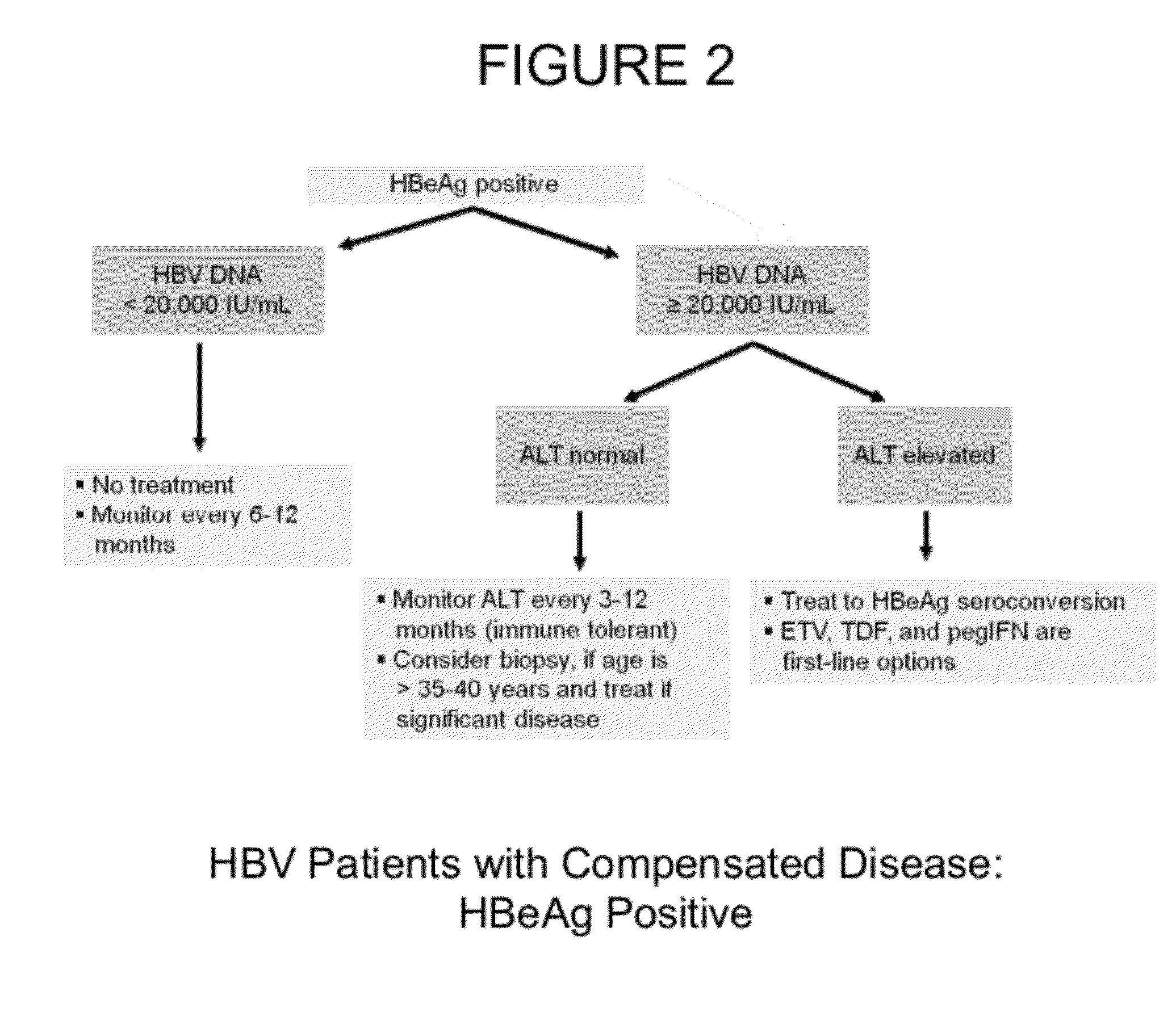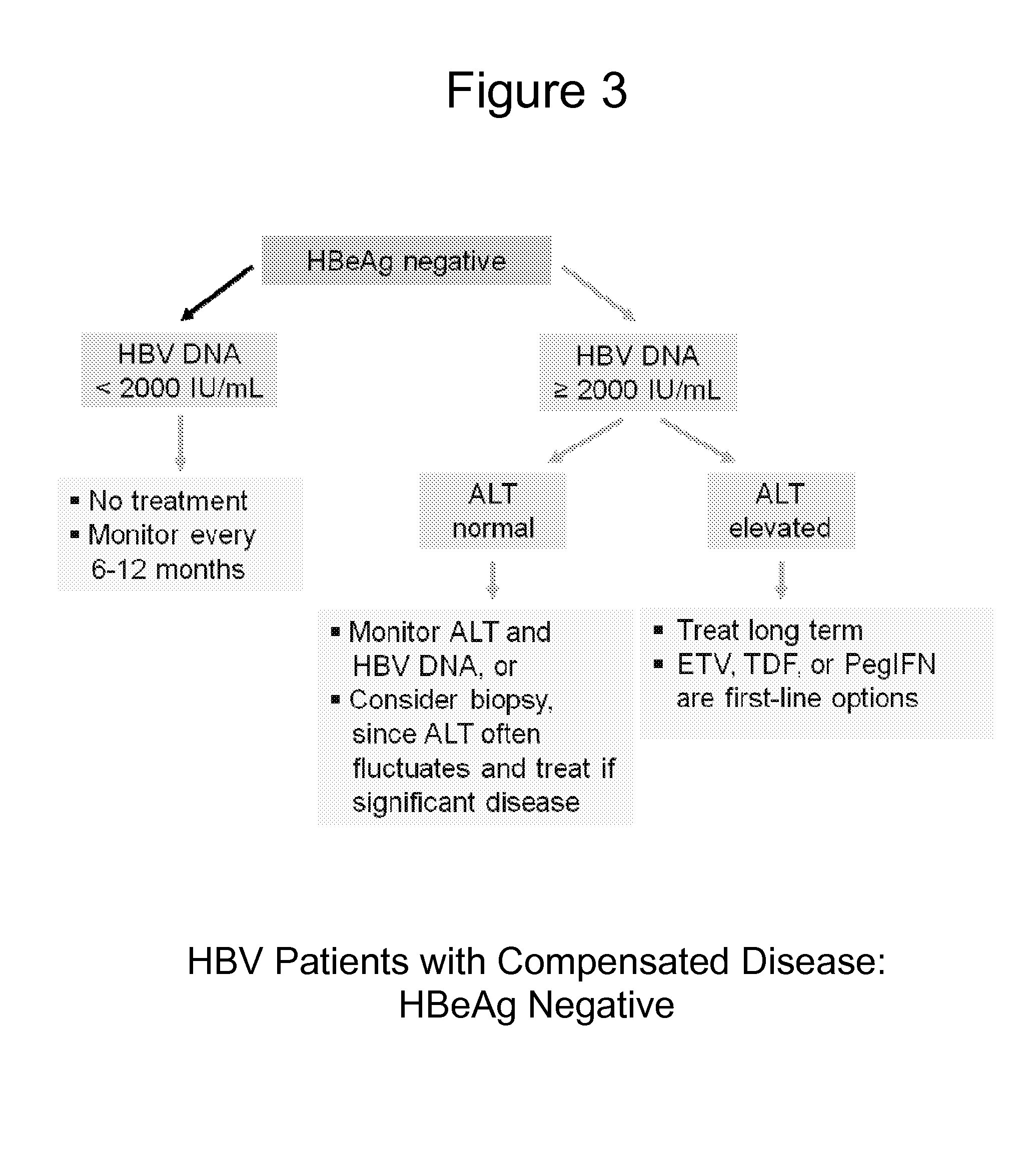HBV antisense inhibitors
a technology of hbv and antisense, applied in the field of antisense oligonucleotides, can solve the problems of limited therapeutic efficacy, serious and unpleasant side effects, and no effective therapeutic agents, and achieve the effects of reducing the infection of hepatitis b virus, and reducing the amount of hbv dna
- Summary
- Abstract
- Description
- Claims
- Application Information
AI Technical Summary
Benefits of technology
Problems solved by technology
Method used
Image
Examples
example 1
Antisense Inhibition of Hepatitis B Virus Expression in HepG2 2.2.15 Cells with LNA Antisense Oligonucleotides
[0146]Locked nucleic acid oligonucleotides were purchased from Exiqon. The LNA antisense oligonucleotides tested were 16 nucleotides in total length, with each having a 4LNA-8 nt-4LNA motif, and each comprising a central nucleotide (nt) gap segment having eight consecutively linked 2′-deoxynucleotides. The nt gap segment in each 16-mer ASO is flanked on both sides (5′ and 3′) by a wing segment. Each wing segment in each ASO has four consecutively linked nucleotides. Each nucleotide of each wing segment in each ASO has a locked nucleic acid (LNA) sugar modification. Each internucleotide linkage throughout each LNA antisense oligonucleotide is a phosphorothioate (P═S) linkage, although it is envisioned that some internucleotide linkages on some ASOs of the invention may be linkages other than a phosphorothioate, including a phosphodiester linkage. It is also within the scope o...
example 2
Antisense Inhibition of Hepatitis B Virus or SV40 T Antigen Expression in HepAD38 (Tet-HBV) Cells with an LNA Antisense Oligonucleotide
[0154]An LNA antisense oligonucleotide targeting HBV was designed with the sequence GAGGCATAGCAGCAGG (SEQ ID NO: 16), complementary to the DNA sequence recited in SEQ ID NO: 4 and GENBANK Accession No. U95551.1, incorporated herein as SEQ ID NO: 16. The LNA antisense oligonucleotide is 16 nucleotides in total length, with a 4-8-4 LNA motif, wherein the ASO has a central gap segment having eight consecutively linked 2′-deoxynucleotides. The gap segment is flanked on both sides (5′ and 3′) by a wing segment. Each wing segment has four consecutively linked nucleotides. Each nucleotide of each wing segment has a locked nucleic acid (LNA) sugar modification. Each internucleotide linkage throughout the LNA antisense oligonucleotide is a phosphorothioate (P═S) linkage. Each cytosine of the LNA antisense oligonucleotide is a 5-methylcytosine. The LNA antisen...
example 3
Antisense Inhibition of Hepatitis B Virus or SV40 T Antigen Expression in Expression in THT1 Cells with an LNA Antisense Oligonucleotide
[0159]The LNA antisense oligonucleotide described in Example 3 was evaluated for its ability to reduce HBV mRNA in THT1 cells, also known as HepG2 2.2.15 cells. These cells were transfected using electroporation with 741 nM, 2,222 nM, 6,667 nM, and 20,000 nM of antisense oligonucleotides for a period of approximately 24 hours. RNA was isolated from the cells and HBV mRNA levels were measured by quantitative real-time PCR. HBV mRNA levels were adjusted according to total RNA content as measured by RIBOGREEN. The data is presented in Table 4, expressed as percent inhibition of mRNA levels compared to untreated cells. As illustrated in Table 4, the LNA antisense oligonucleotide reduced HBV mRNA levels in a dose-dependent manner.
[0160]
TABLE 4Dose-dependent antisense inhibition of HBV mRNA in HepG2 cellsDose%(nM)inhibition741342222386667422000057
(B) Asse...
PUM
| Property | Measurement | Unit |
|---|---|---|
| pH | aaaaa | aaaaa |
| time | aaaaa | aaaaa |
| time | aaaaa | aaaaa |
Abstract
Description
Claims
Application Information
 Login to View More
Login to View More - R&D
- Intellectual Property
- Life Sciences
- Materials
- Tech Scout
- Unparalleled Data Quality
- Higher Quality Content
- 60% Fewer Hallucinations
Browse by: Latest US Patents, China's latest patents, Technical Efficacy Thesaurus, Application Domain, Technology Topic, Popular Technical Reports.
© 2025 PatSnap. All rights reserved.Legal|Privacy policy|Modern Slavery Act Transparency Statement|Sitemap|About US| Contact US: help@patsnap.com



